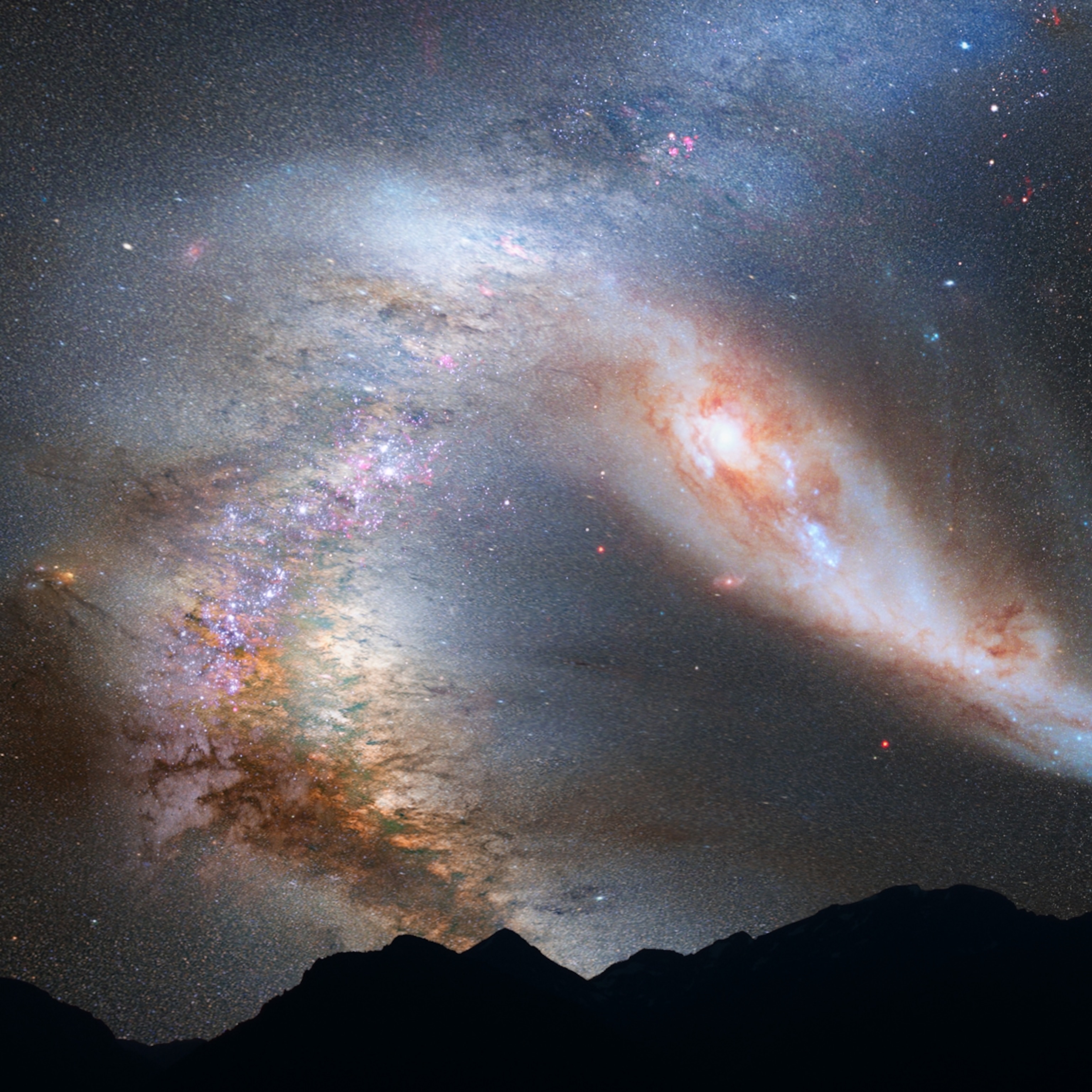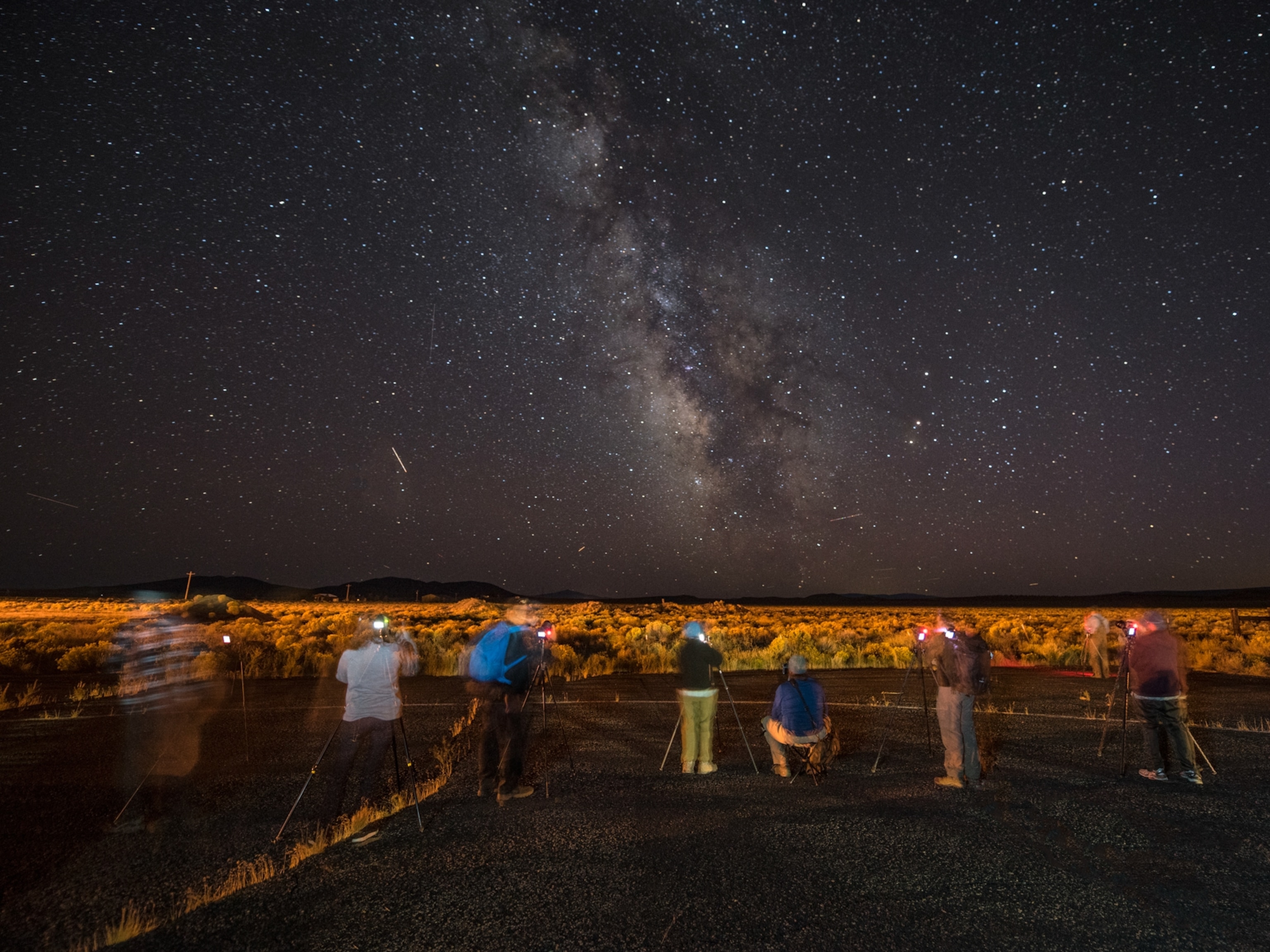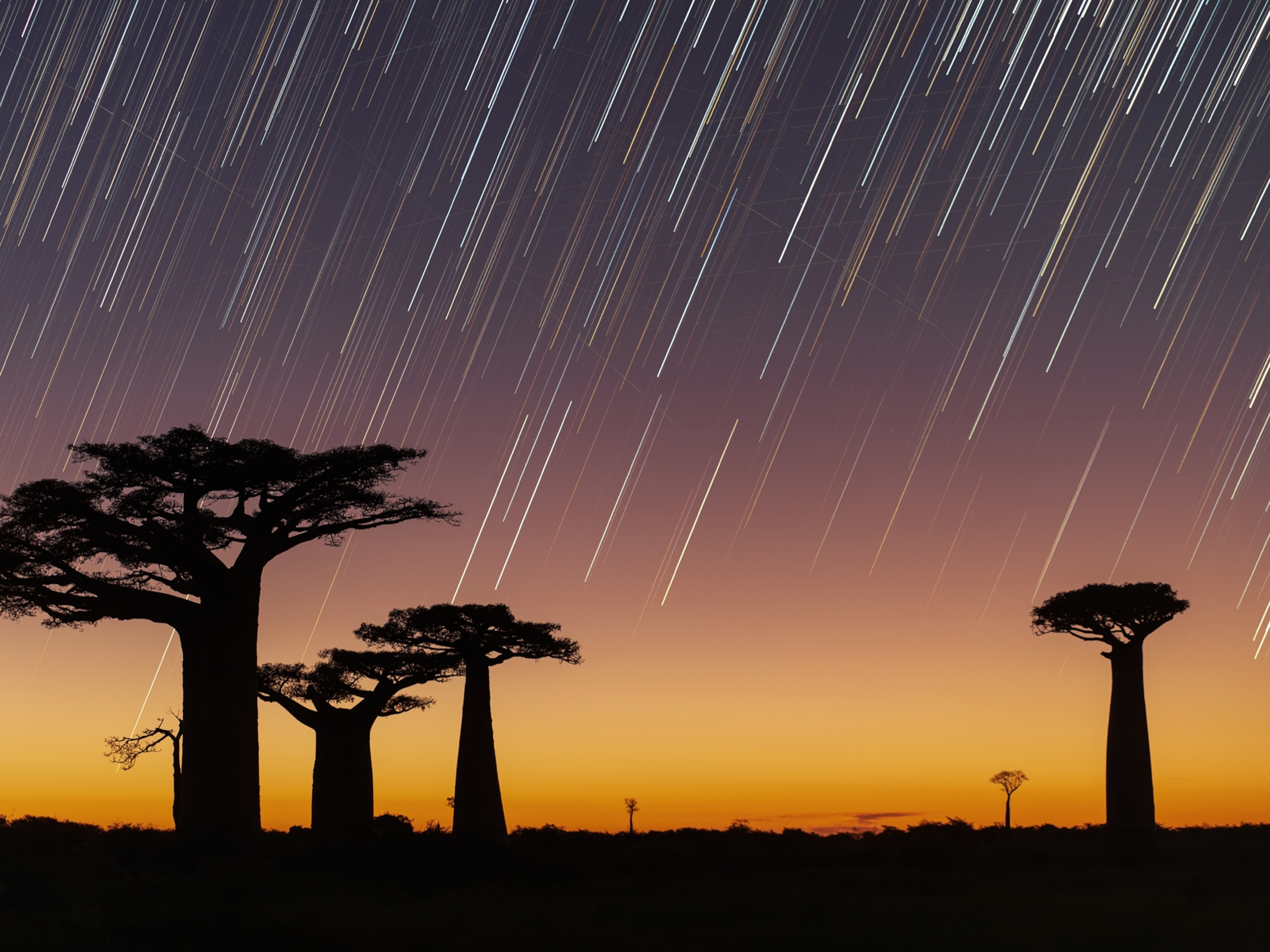
Our galaxy is due to crash into its neighbor—but when?
Measurements from the Gaia spacecraft have adjusted predictions for when and how the Milky Way will collide with the nearby Andromeda galaxy.
Our galaxy, the Milky Way, is destined to collide with its largest neighbor, a sparkling collection of stars called the Andromeda galaxy. This cataclysm has been foretold by well-known physics, and astronomers know that when the space dust clears, neither galaxy will look the same: Within a billion years or so of first contact, the two will merge and form a much larger, elliptical galaxy.
But new measurements of stars within Andromeda, made by the European Space Agency’s Gaia space telescope, are changing predictions for when, and exactly how, that collision will go down.
As astronomers report in the Astrophysical Journal, the originally predicted crash date of 3.9 billion years from now has been pushed back by about 600 million years. And instead of a head-on collision, astronomers are predicting more of an initial glancing blow—kind of like knocking into a neighbor’s rear-view mirror.
“The overall picture is not too different,” says study author Roeland van der Marel of the Space Telescope Science Institute. “But the exact orbital pathways are different.”
Is that good news? It sounds like this collision is still inevitable.
It is inevitable. Andromeda, which is currently 2.5 million light-years away, is hurtling toward the Milky Way at nearly 250,000 miles an hour.
Astronomers have known this since Vesto Slipher first aimed a telescope at Andromeda and measured the galaxy’s motion in 1912. (He didn’t know it was a galaxy at the time, when conventional wisdom suggested it was a nebulous cloud inside the Milky Way. Needless to say, Slipher’s calculations suggested that idea needed revising).
Later, astronomers using the Hubble Space Telescope were able to measure the sideways motion of Andromeda, which determines whether the galaxies are destined for a direct hit or a cosmic brush-pass. Using those observations, in 2012 van der Marel and his team forecast a head-on collision in roughly 3.9 billion years—a prediction they’ve just revised.
“It is interesting, even though it is in some ways a fairly minor modification of what was known previously,” says Brant Robertson of the University of California, Santa Cruz.
What did Gaia do differently from Hubble?
Gaia took a good look at 1,084 of the brightest stars within Andromeda and measured their motions. Then, van der Marel and his team averaged those observations and calculated Andromeda’s rotation rate for the first time, as well as making new calculations of the galaxy’s side-to-side movement.
That latter observation is “fiendishly difficult to make at these distances,” says Julianne Dalcanton of the University of Washington.
With those new numbers, the team re-derived Andromeda’s trajectory using computer models. And when they put the galaxy on fast-forward, it took a slightly different, more tangential path toward the Milky Way, delaying the eventual collision and delivering more of a side-swipe than a face punch.
Now, predictions suggest that initial boop will occur 4.5 billion years from now, which Dalcanton says is not surprising.
“Since we’re talking billions of years here,” she says, “even slight changes in the current motions can play out very differently when ‘fast forwarded’ over eons.”
So, how will this galactic smackdown play out?
At their first close approach, the two galaxies will be about 420,000 light-years apart, or far enough from one another that their glittering disks will not interact. However, galaxies are embedded in a large amount of dark matter, and as the Milky Way and Andromeda pass one another, those dark haloes will snag.
“That causes friction, which causes them to slow down and lose energy—and fall back together,” van der Marel says.
In other words, the galaxies will U-turn and actually collide, pass through one another, whip around, and collide again. This will happen over and over until eventually those collisions have sculpted them into a single galaxy.
What does this mean for Earth?
As was true for the original prediction, this merger won’t mean much of anything at all to any earthly lifeforms that still exist in 4.5 billion years. Space is big and stars are far apart, and even when galaxies collide, individual stars rarely crash into one another.
“We would still find ourselves orbiting the sun on a more randomly oriented orbit within a large elliptical galaxy,” van der Marel says.
Still, the cosmic light show that will unfold overhead promises to be pretty spectacular. As the two galaxies approach one another, Andromeda will grow bigger and bigger in the night sky, eventually distorting into a deformed spiral as the Milky Way’s gravity tugs on it. Then, as the galaxies begin boomeranging and smashing together, compressed gases will ignite bursts of new star formation.
“That’s when it really looks pretty on the sky,” van der Marel says.
The question is whether anything on Earth’s surface will still be alive to notice. By that point, the sun will be well on its way to becoming a red giant star, which is a natural stage in stellar evolution. As that happens, it will brighten and balloon outward, engulfing Mercury and Venus and turning Earth into a roasted bit of planetary charcoal.


















